
The Group maintains a keen awareness of the impact our business activities have on the environment, and our basic policy is to contribute to conservation of the environmental on a global scale by promoting the development of technologies that enhance the productivity of resources and materials. Furthermore, as we execute business, we seek to reduce our environmental impact at every stage of the supply chain.
Assessment: Achieved / Steady Progress Not Achieved
| KPI | Fiscal 2021 Results/Progress | Assessment |
|---|---|---|
| Total in-house CO₂ Emissions: Promoting initiatives to achieve net zero CO₂ emissions in fiscal 2050 and 50% reduction in fiscal 2030 (vs. fiscal 2018) |
We continued our activities through the Carbon Free Project, which was launched to achieve these targets, and promoted a variety of initiatives for decarbonization, including the introduction of CO₂-free electricity at each of our sites and the creation of roadmaps per division toward net zero emissions. |
|
| Increase Percentage of Recycled Raw Materials: Expand the Breadth of Recycled Materials to be Treated |
We have been working to increase the percentage of recycled raw materials (input ratio of raw materials or content ratio in products) to 50% or more by 2040 used in copper smelting by expanding our facilities for greater treatment of recycled materials and improving logistics efficiency. |
|
| Landfill Disposal Rate: Less than 1% in Fiscal 2021 | We have set a goal of keeping our landfill disposal rate at no more than 1.0% in order to cut down on waste with the aim of minimizing our impact on the environment. Our landfill disposal rate in fiscal 2021 was 0.68%. |
The JX Nippon Mining & Metals Group views climate change as an urgent issue that must be resolved on a global scale, and in order to contribute to the resolution of this issue, we have set the ultimate goal of achieving net zero CO₂ emissions and are further accelerating our efforts to achieve this goal.
Special Feature 2: The JX Nippon Mining & Metals Group’s Climate Change StrategyAt the Group, we recognize that the mission of players involved in the materials industry is to minimize resource final disposal through an ongoing cycle while maintaining the maximum value of these resources. Based on this concept, we aim to achieve a circular economy.
Special Feature 1: Sustainable Copper VisionMinor metals such as nickel, cobalt, and lithium used in LiB are not produced in Japan, but are rather concentrated in a specific set of countries and regions. Reducing the environmental impact and supply chain risk associated with the use and securing of these mineral resources has become a serious social issue.
Since 2020, we have been working to develop technologies for achieving closed-loop recycling. In this process, minor metals are recovered from automotive LiBs reaching end of life (EoL LiBs) and used again as raw materials for automotive batteries, and we have installed continuous processing small-scale testing equipment (bench-scale equipment) for recycling automotive LiB at Hitachi Works. In the first half of fiscal 2021, JX Metals Circular Solutions Co., Ltd. began demonstration trials for high-purity nickel sulfate recovery, beginning similar tests for high-purity cobalt sulfate in the first half of fiscal 2022. Furthermore, we are targeting the launch of demonstration trials for the recovery of high-purity lithium carbonate in fiscal 2023.
Going forward, we aim to increase the recovery rate of metals contained in EoL LiBs waste automotive LiB and establish a process capable of complying with EU battery regulation requirements to meet the global need for a circular economy.

Bench-scale equipment at Hitachi Works
In August 2021, we established a new company, JX Metals Circular Solutions Europe GmbH (JXCSE), in Frankfurt, Germany. This company’s aim is to promote our EoL LiBs recycling and battery materials businesses. In Europe, a draft battery regulation was released in December 2020, part of growing discussions on battery recycling in conjunction with the widespread adoption of EVs. We have been working on the commercialization of LiB recycling through TANIOBIS, our Germany-based Group company, with a view to collaborating with European automotive manufacturers and others. Going forward, JXCSE will augment our efforts, promoting these as comprehensive action including new material development.
In Japan, JX Metals Circular Solutions Co., Ltd. started operation in October 2021 to promote the development of technologies for closed-loop recycling.

JX Metals Circular Solutions Co., Ltd.
In August 2021, we established the Battery Material & Recycling Promotion Office, a result of integrating the LiB Recycling Project Office within the Advanced Technology & Strategy Department, Technology Group with the Thin Film Materials Division’s general operations related to the development of all solid-state battery materials. In addition, we transferred the all solid-state battery materials development work being conducted at the Isohara Works Product Development Center to the Technology Development Center, establishing the Battery Materials Group there.
We have been developing recycling technologies to realize LiB closed-loop recycling, and at the same time, we have been developing technologies for materials to be used in all solid-state batteries, expected to dominate the next generation of battery technology. With this organizational change, we have established a system to promote LiB recycling and material development in a unified manner. We will accelerate commercialization through this consolidation of internal battery-related resources, which also offers synergies such as improving the quality of recycled materials by leveraging our materials development technology and developing technologies with a view to the entire supply chain. In the future, the Battery Material and Recycling Promotion Office will play a central role in the Group’s efforts to realize automotive LiB recycling in cooperation with domestic and overseas sites.
Group company TANIOBIS participates in HVBatCycle, a consortium for joint research and development on the recovery and reuse of LiB materials. In Germany, the Volkswagen Group has been leading a joint research and development effort with industry and academic institutions such as RWTH Aachen University and the Fraunhofer Institution for the closed-loop recycling of cathode materials, electrolytes, and graphite, which are the components that make up batteries. The consortium has now been formed as an extension of these efforts with the support of the German Federal Ministry for Economic Affairs and Climate Action.
In this consortium, we will newly establish a hydrometallurgy process R&D facility in the town of Goslar, the home of TANIOBIS’s main site, based on the technologies developed by the Group. Here, we will work with project partners to optimize this process to recover high-quality battery materials in high yield using battery powder provided by Volkswagen. In Europe, where industry-government-academia efforts to expand the use of EVs are booming, we will take further steps toward the social implementation of automotive LiB recycling.
In April 2022, JXCSE entered into an agreement with Mizuho Bank, Ltd. for the formation of a green loan. A green loan is a loan made in accordance with the Green Loan Principles, which are international guidelines for financing, to finance projects that contribute to solving and mitigating environmental problems. This green loan is to be used to invest in R&D facilities for the recycling of spent automotive LiB in Germany.
The Green Innovation Fund operated by the New Energy and Industrial Technology Development Organization (NEDO) was established to create a virtuous circle between the economy and the environment as part of the Green Growth Strategy for carbon neutrality in 2050. The fund aims to provide long-term, continuous support for initiatives by corporations and other organizations, from research and development and demonstration to social implementation.
The JX Nippon Mining & Metals Group proposed the Recycling of Automotive LiBs through Closed-Loop Recycling project, which was selected as a fund project in May 2022. We will take this opportunity to more actively promote developing technologies toward effective use of precious metal resources.
Group company Nikko Metals Taiwan Co., Ltd.’s Changpin Recycle Center has increased its collection and processing capacity by 2.4 times, from 500 to 1,200 tons per month, by adding a new building and additional recycling equipment in order to increase its capacity for handling recycled raw materials. This new equipment began operation in April 2021.
Taiwan has clusters of cutting-edge electronics industries and a well-developed collection system for waste electrical and electronic equipment. It is expected to continue to generate increasing amounts of recycled raw materials going forward. In Taiwan, we will utilize the rapid and accurate analysis and evaluation technologies we have cultivated so far to increase the collection of raw materials.

New crusher and automatic sampling equipment
At the Saganoseki Smelter & Refinery of JX Metals Smelting Co., Ltd., we newly established the Oita Recycling Logistics Center in the Oita Port Ozai Nishi-ku area of Oita City, Oita Prefecture. This center launched operations in October 2021. The Saganoseki Smelter & Refinery, which aims to strengthen its business by pursuing an optimal mix of copper concentrates and recycled raw materials, has positioned the center as a collection site for recycled raw materials. Harnessing this center as a central driver in recycling mineral resources, including copper and minor metals, we are working to enhance functionality by efficiently analyzing raw materials, installing a storage building and a raw material compressor to improve transportation efficiency, and taking other measures.
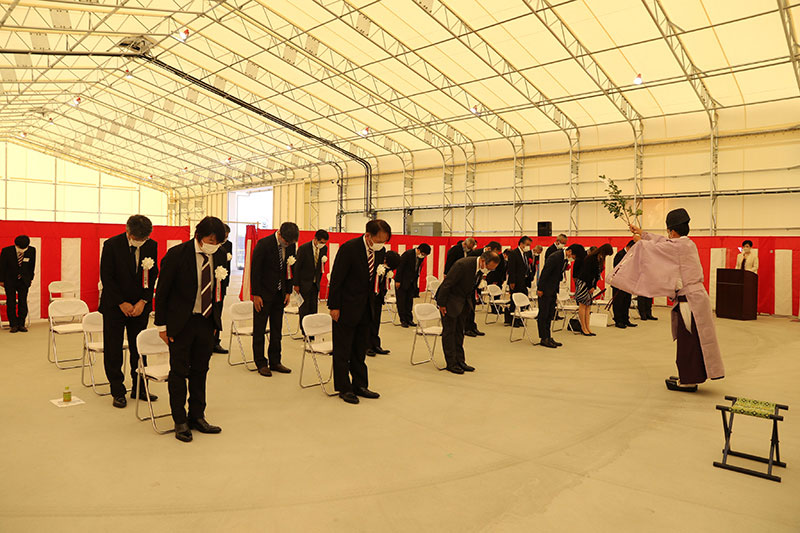
Opening ceremony held in September 2021
Recycled raw materials contain a large amount of combustible materials such as resin substrates and housing plastic. If these materials are treated as-is in the copper smelting process, the violent combustion causes an increase in exhaust gas emissions, destabilizing operations. Therefore, more advanced pre-treatment technologies and facilities are needed to efficiently smelt a greater number of recycled raw materials.
At the Saganoseki Smelter & Refinery, we added a large pre-treatment calcining furnace (kiln), which launched operations in April 2022. This has made it possible to efficiently remove resins and other mataerials adhering to the recycled raw materials, and increase pre-treatment capacity by 50% over previous levels to just under 10,000 tons per month.
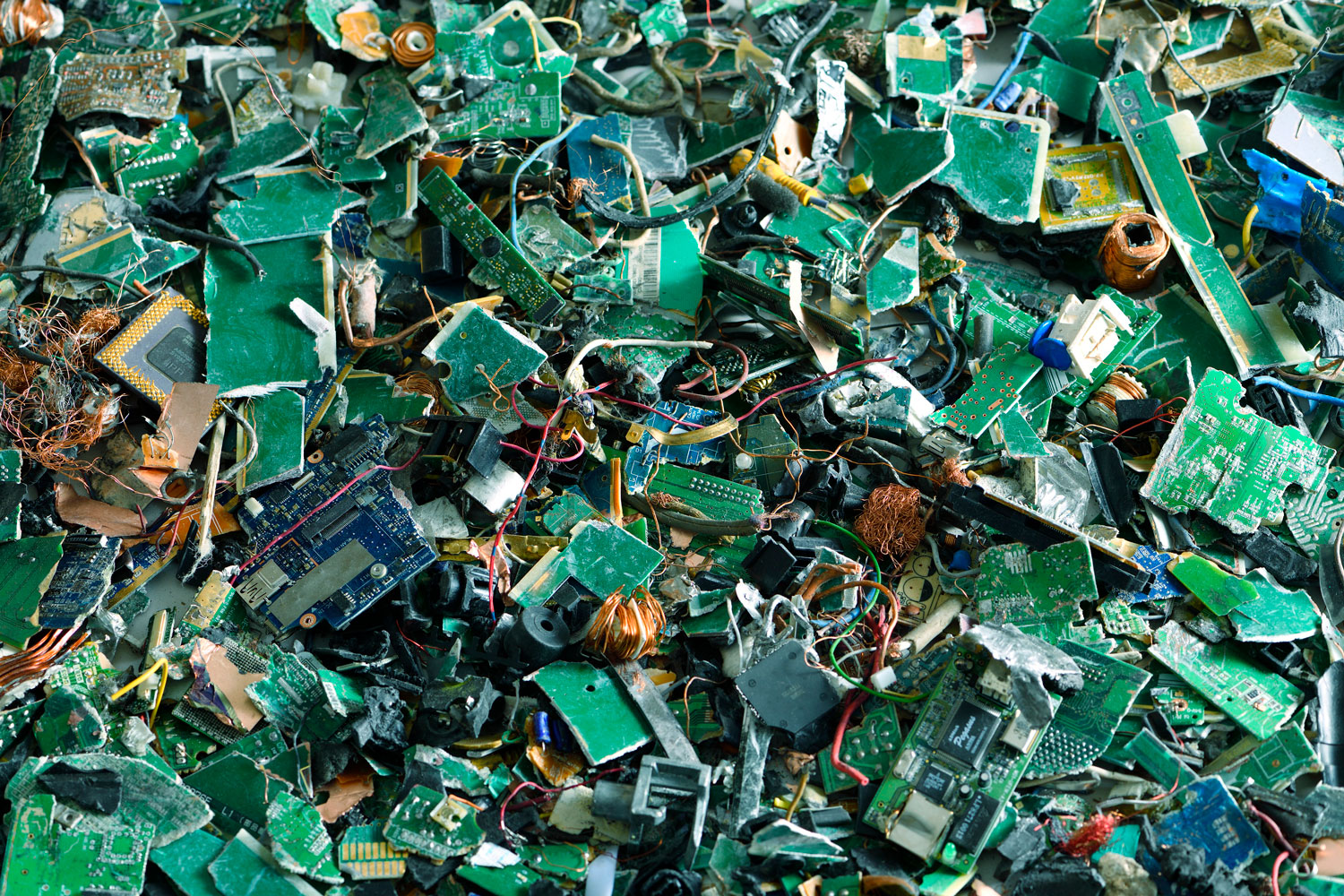
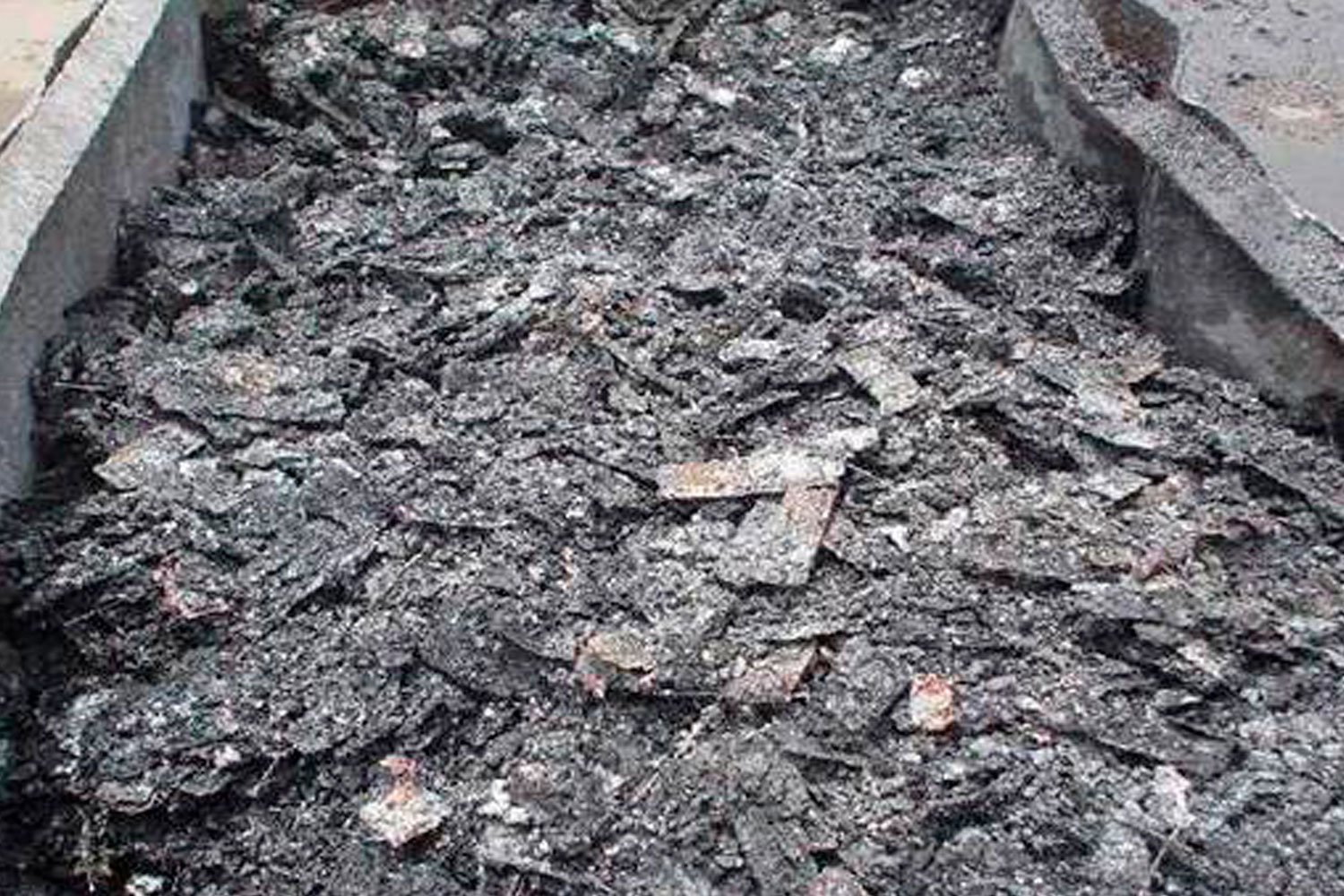
Before and after incineration of recycled raw materials
The Group’s Smelting, Refining, and Recycling Business aims to recycle valuable metals such as copper and precious metals contained in scrap produced by factories and in used electrical and electronic equipment generated in daily life, etc. Here, environment-related Group companies work in unison to realize a recycling-oriented society.
On industrial waste disposal, secondary waste such as incinerator ash and residue is often generated, much of which is landfilled at final disposal sites. In the Group’s Recycling and Environmental Services Business, we have established a recycling system under the slogan “never discard, never bury” and pursue industrial waste treatment and non-ferrous metal recycling with zero emissions so that this secondary waste is also recycled.
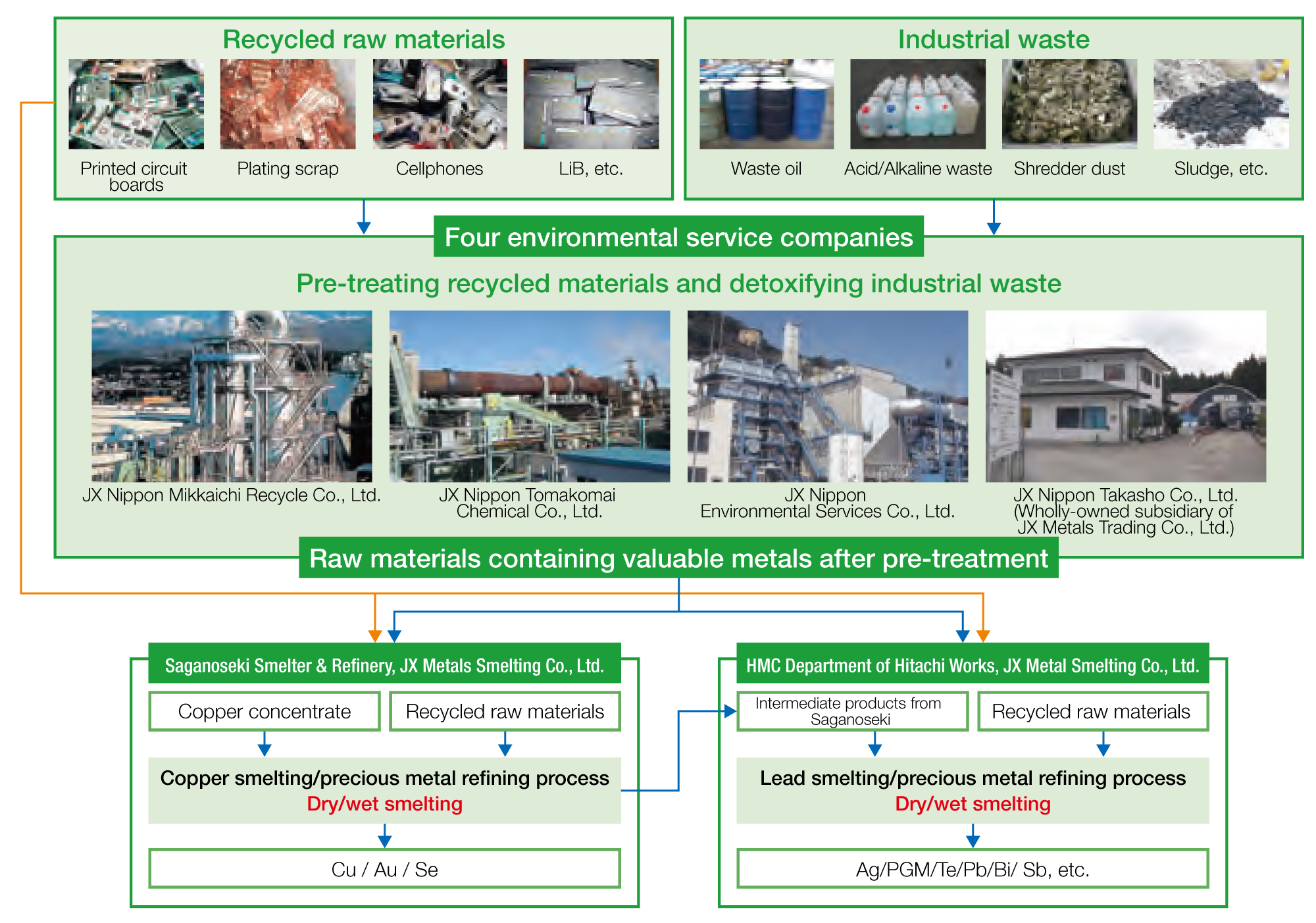
The Group recognizes that biodiversity conservation is an important management issue. Mining operations in particular are strongly linked to local ecosystems and require due care, which is why we are implementing a variety of initiatives in Japan and overseas.
At the Caserones Copper Mine, 48,200 seedlings from 15 native flora species are being planted in an area spanning 1.43 square kilometers to protect biodiversity. The areas where these are being planted are Ramadilla on the mine site and around the off-site areas of Maitencillo and Amolanas. In addition to reforestation, we are monitoring the development of plants native to the area and conducting research on the impact of climate and other factors on the propagation and distribution of plants native to the high altitudes around the Caserones Copper Mine. In 2021, 6,000 new seedlings were planted, with total of 24,500 planted in an area of 0.98 square kilometers so far.
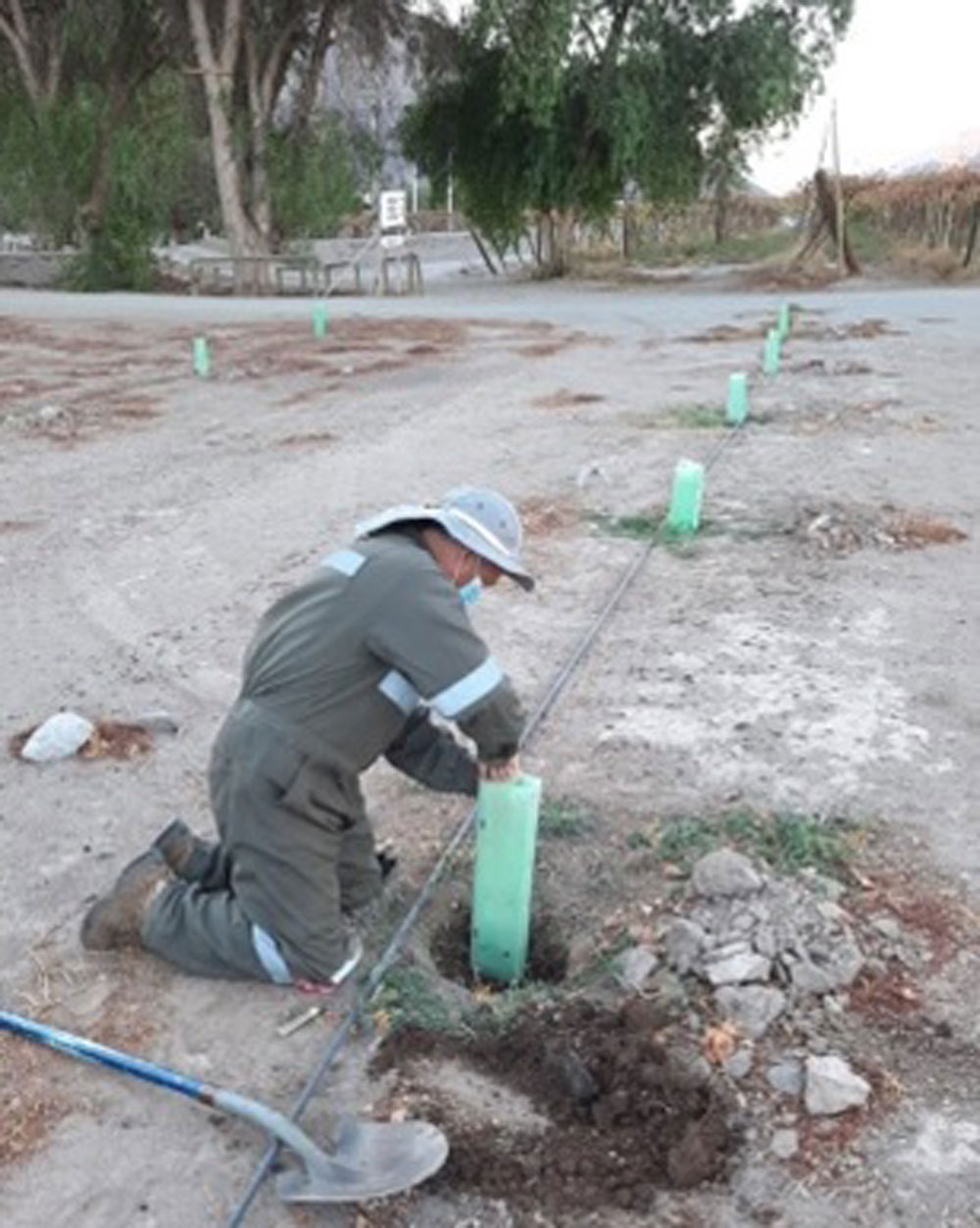

Plants native to the Caserones Copper Mine area
The Group has been promoting reforestation activities throughout Japan, especially at the sites of closed mines. Employees and their families participate in these activities to communicate the importance of protecting the local environment through contact with nature.

The city of Hitachi is the Group’s place of origin. Approximately 500 Oshima cherries and wild cherries planted in the early days by Hitachi Mine are growing on Mt. Kurakake, next to our Hitachi Works. Since 2008, the Mt. Kurakake Cherry Centennial Committee of Hitachi City has sponsored activities to protect these trees and create a place of rest and relaxation for the local community, as well as a place for environmental education of the children of the future. In fiscal 2021, we once again were forced to cancel forest maintenance activities to help prevent the spread of COVID-19. Activities are scheduled to resume in fiscal 2022, to be implemented in November 2022.

Forest maintenance activities
The Group believes that it is important to minimize the impact on the environment and society in the surrounding areas when closing a mine. Overseas, we have formulated a mine closure plan for the Caserones Copper Mine through dialogue with the relevant authorities, local communities, and other stakeholders, and have made financial and other preparations to implement the necessary measures, thereby ensuring appropriate responses in the event of its closure.
From its founding in 1905, the JX Nippon Mining & Metals Group has been engaged in mining operations across Japan. By ensuring a steady supply of nonferrous metals and other resources, we contributed to Japan’s economic growth. In Japan, however, operations have ceased in nearly all mines as their mineral resources have dried up. Still, in closed mines we provide acid mine drainage (AMD) treatment and work to maintain and preserve the natural environment.
JX Nippon Mining Ecomanagement, Inc. oversees the closed mines managed by the Company. The work mainly consists of detoxifying acid mine drainage (AMD) and maintaining and preserving the tailings dams and galleries of the mining sites.
AMD occurs when rainwater or other water comes into contact with materials such as copper concentrates remaining after the mine is closed or the rubble and slag of tailings dams. Since AMD contains metals and is highly acidic, treatment facilities have to operate 365 days a year.
As for tailings dams, construction is underway to handle the recent flooding in areas of frequent rainfall, and to adapt to large earthquakes. Through the management of these closed mines, we are striving to preserve the natural environment.
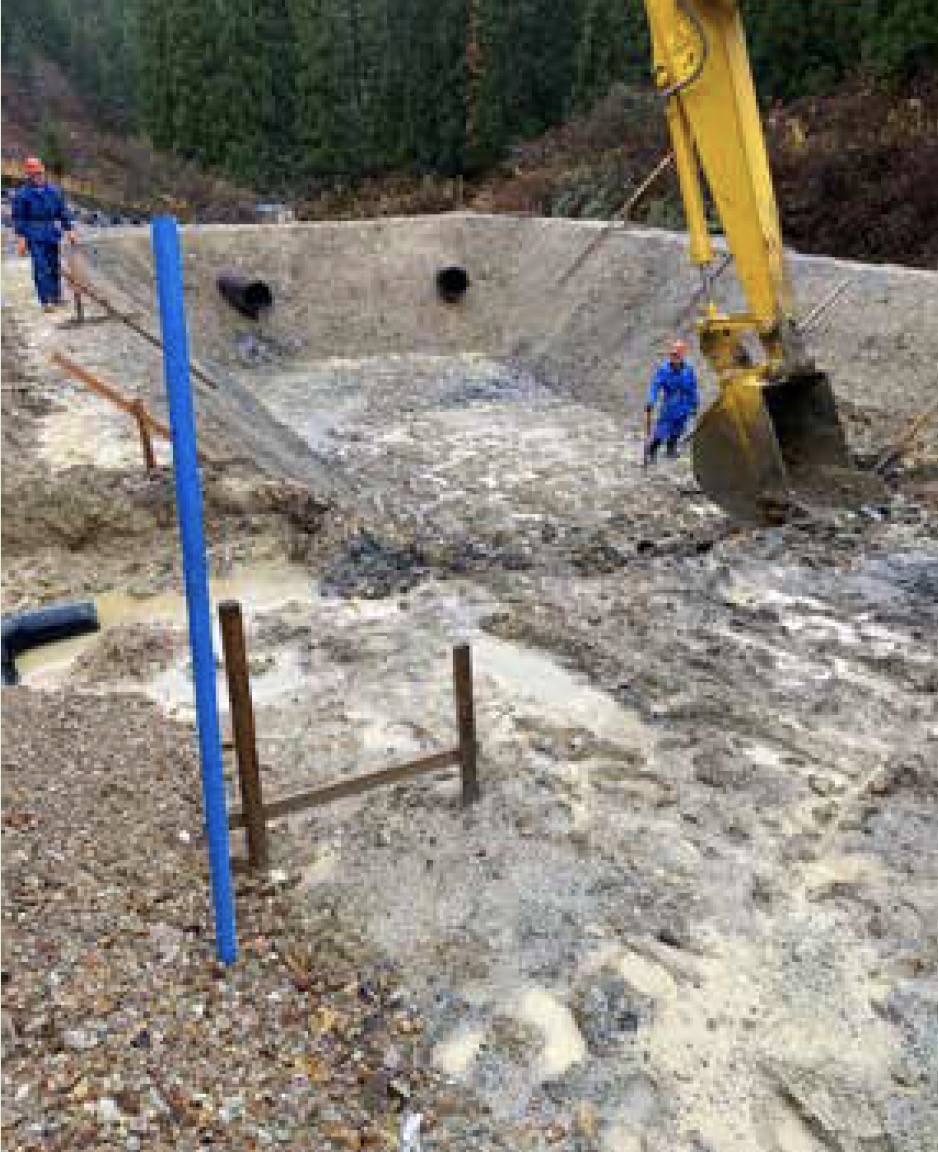
Installation of a new catchment basin at Mitate Mine
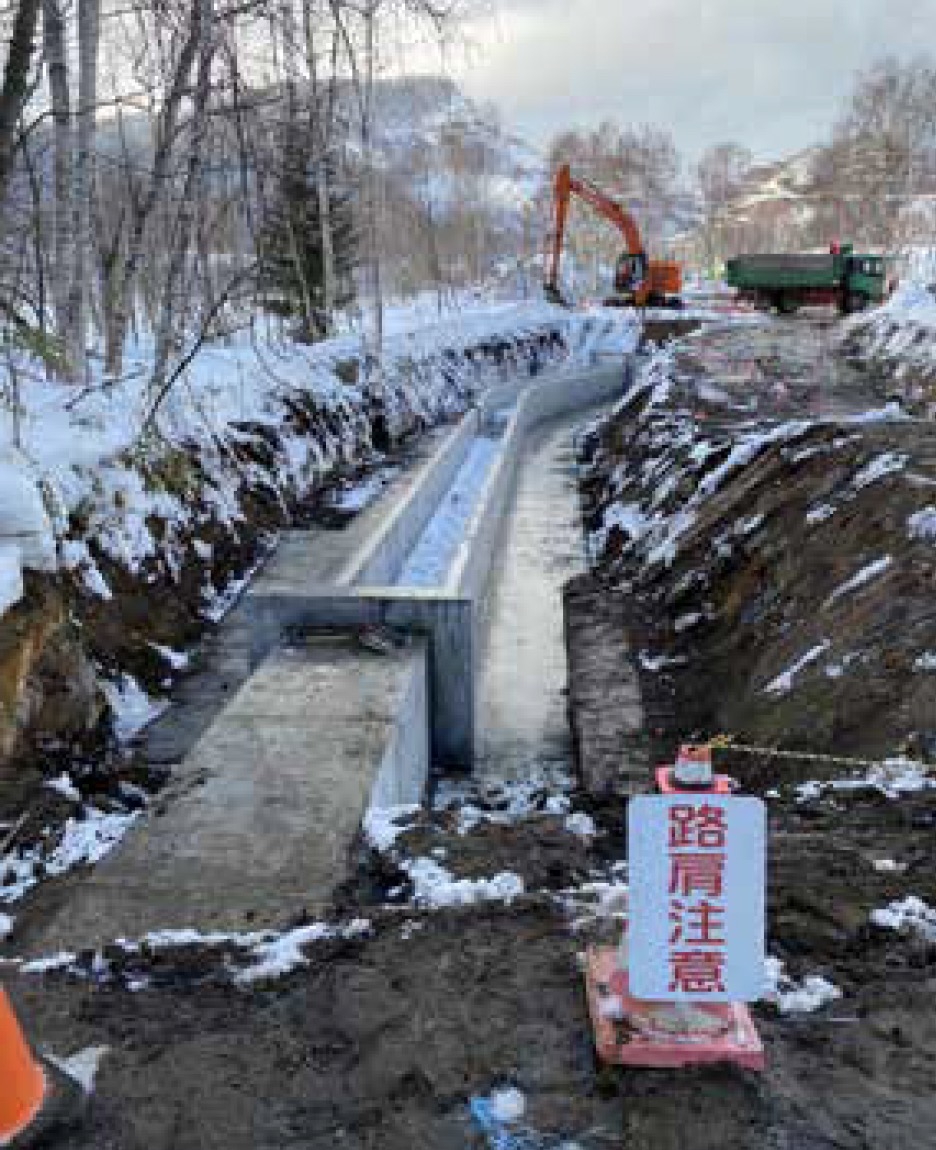
Site improvements at the stone tailings dams at Toyoha Mine
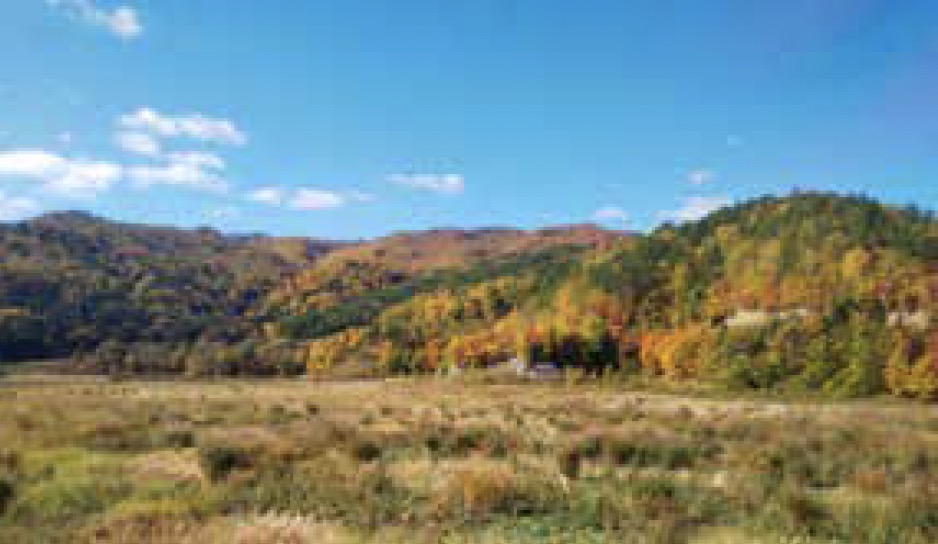
Autumn leaves around Toyoha Mine
The Great East Japan Earthquake that occurred in March 2011 damaged the tailings dams at both the Oya Mine and Takatama Mine. The seismic resistance of both sites met the construction standards effective at the time of the earthquake, and should have been able to withstand a Level 1 earthquake, which is the earthquake level anticipated by the government. However, the earthquake damaged these sites because its extent far exceeded the earthquake resistance standards anticipated to be needed by the government. After reflecting on this incident, we organized a committee of experts (scholars and specialists) to review the seismic standards of the tailings dams. As a result, we voluntarily established a standard that our sites have seismic resistance capable of with-standing a Level 2 earthquake.* At the same time, we have established strict voluntary standards for stability against flooding that has occurred in several areas over the past few years, caused by climate change.
We used these voluntary standards for seismic resistance and heavy rainfall in risk assessments conducted for all 51 tailings dams in Japan. For those tailings dams determined to require countermeasures, we established priorities and have been carrying out construction work against potential damage since fiscal 2013, with plans to complete all countermeasure construction by fiscal 2024. This construction work includes ground improvement (to ensure seismic stability) and channel augmentation (to ensure drainage capacity during floods).
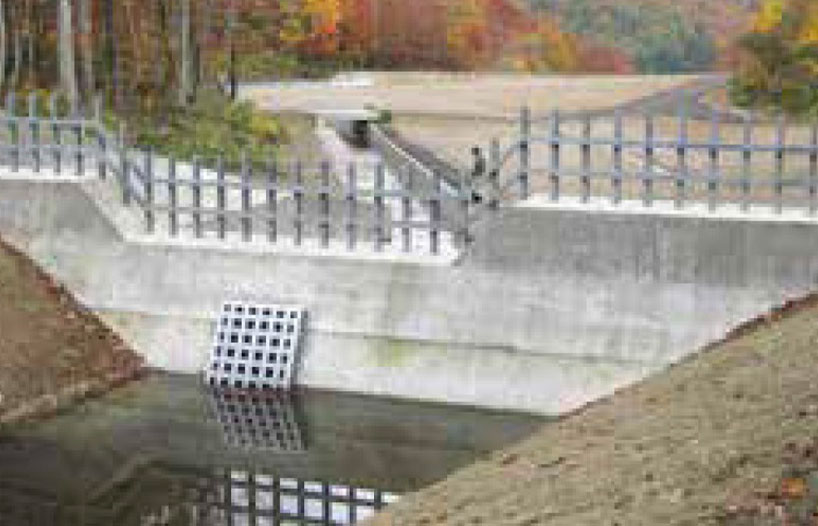
Countermeasure construction: Installation of check dams (driftwood stopper)

Countermeasure construction: Upgrading drainage channels
In the Group’s business activities, we use large quantities of water in our copper mining operations, as well as for cooling water (mainly seawater) used in smelters. We recognize that water resources are not only essential for our Group’s business activities, but also important resources for the local communities where our production sites are located. With this in mind, we are doing our best to make sure that these sites make effective use of water resources by properly monitoring water consumption and exploring methods for reduced use or reuse.
One example comes from the Caserones Copper Mine in Chile, a mine where we have operations. Here, we have set limits on water use that are stricter than those set by the local authorities, and we monitor the balance of water intake and discharge. In areas downstream from the mine, we desalinate seawater, providing water supplies used by local residents for agriculture and general home use.
The Group assesses and confirms how water risks, such as water shortages, water pollution, and flooding associated with climate change, affect each of the Group’s production sites and its supply chain. We use Aqueduct, a water risk assessment tool provided by the World Resources Institute (WRI), to identify what water risks are present. In fiscal 2021, we assessed six of our main production sites in Japan. None of the sites were found to have high water risk in the assessment.
The Group has voluntarily established chemical substance management standards, and we strive to mitigate the harmfulness of these substances by controlling their use. In addition, the Green Procurement Guidelines clearly identify substances that must not be included in manufacturing processes, materials, or equipment, and we ensure our suppliers are aware of these. Furthermore, we strive to provide safety information to our customers and all other product stakeholders.
The Group contributes to environmental conservation by detoxifying hazardous waste through our treatment businesses for low-concentration PCBs and asbestos. In 2014, JX Nippon Tomakomai Chemical Co., Ltd. became the first firm in Hokkaido to receive certification from the Minister of the Environment as a detoxification facility for treating low-concentration PCB waste. In addition, JX Nippon Environmental Services Co., Ltd. is engaged in the melting and detoxification of asbestos. The company treated approximately 3,409 tons of waste asbestos in fiscal 2021.
We are also proceeding with treatment of Group-owned equipment with high-concentration PCBs at the Japan Environmental Storage & Safety Corporation (JESCO). We have completed treatment of this equipment at sites outside the Tokyo metropolitan area, and plan to complete treatment at sites in the Tokyo metropolitan area by the disposal deadline. In addition, we are planning disposal of equipment with low-concentration PCBs through licensed low-concentration PCB treatment contractors such as JX Nippon Tomakomai Chemical Co., Ltd.; this disposal is scheduled to be completed by fiscal 2024, two years before the disposal deadline.
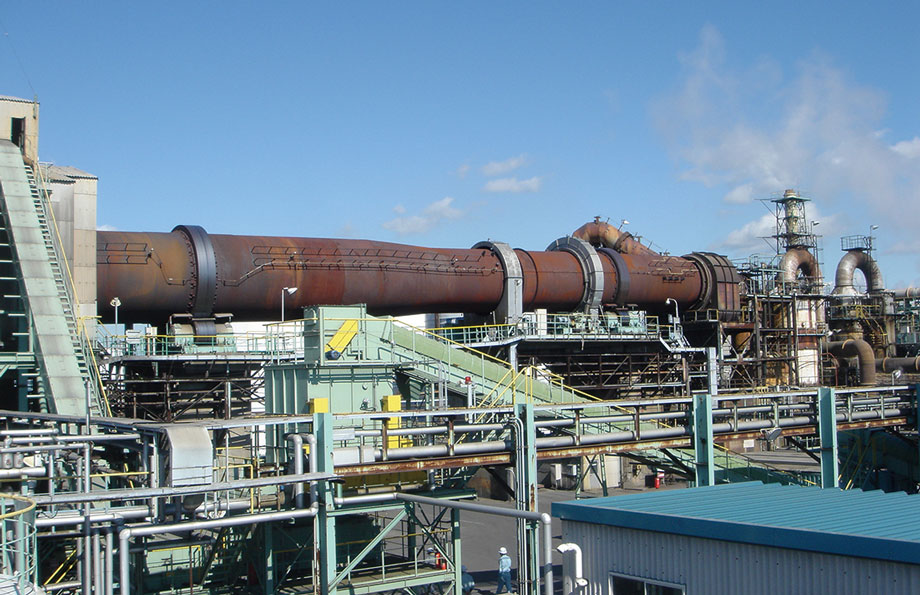
Rotary kiln incinerator at JX Nippon Tomakomai Chemical Co., Ltd.
As a comprehensive manufacturer of nonferrous metals and advanced materials, the JX Nippon Mining & Metals Group is rising to the challenge of innovation in the productivity of resources and materials. Committed to compliance with environmental regulations, we carry out the following initiatives in order to proactively strive for environmental conservation on a global scale, including measures against global warming, and contribute to building a sustainable society.
1. We will contribute to achieving a decarbonized society by promoting technological innovation and energy transition and aiming for zero greenhouse gas emissions.
2. We will supply environmentally-friendly advanced materials to support the growth and advancement of society.
3. We will promote resource recycling and aim for zero emissions in all our business activities.
4. We will thoroughly raise each employee’s awareness of environmental conservation through environmental education, leading to business activities with less environmental impact.
5. We will share information on environmental conservation activities with stakeholders and seek to operate in harmony with society.
Through steady operation of environmental management systems, the Group works to ensure compliance with environmental laws and regulations. The Environment & Safety Department at the Head Office monitors and supervises the state of compliance and reports to the ESG Committee through the Safety and Environment Committee. At their annual meeting, environmental management supervisors work to strengthen our compliance system by providing information on legal and regulatory trend sand reporting on the status of compliance at each operating site. We additionally reinforce employees’ knowledge of laws and regulations by holding rank-specific education and training regularly at the Head Office and operating sites.
In fiscal 2021, there were no adverse dispositions from regulatory authorities (including license revocation, orders to cease operations, orders to cease use of facilities, orders for improvement, fines, etc.) for violations of environmental laws and regulations.
The JX Nippon Mining & Metals Group has established environmental management systems in line with ISO 14001 standards for ensuring achievement of the Action Plan for Environmental Protection, which was drawn up to reflect the Basic Environmental Policy. A multilevel organizational structure has been created, including various committees and subcommittees, in which everyone, from senior management headed by the president to employees at operating sites and affiliated companies, works together to promote environmental conservation and mitigate environmental risk. No environmental accidents occurred in the Group in fiscal 2021.

Individual operating sites implement internal environmental audits at least once a year. In addition, they periodically undergo environmental and safety audits by the Environment & Safety Department of the Head Office. Audits were conducted at 20 sites in fiscal 2021.
Activities in the areas of health and safety and environmental conservation are planned, promoted, and reviewed by the Safety and Environment Committee, an organization under the ESG Committee. The Safety and Environment Committee meets once every six months.
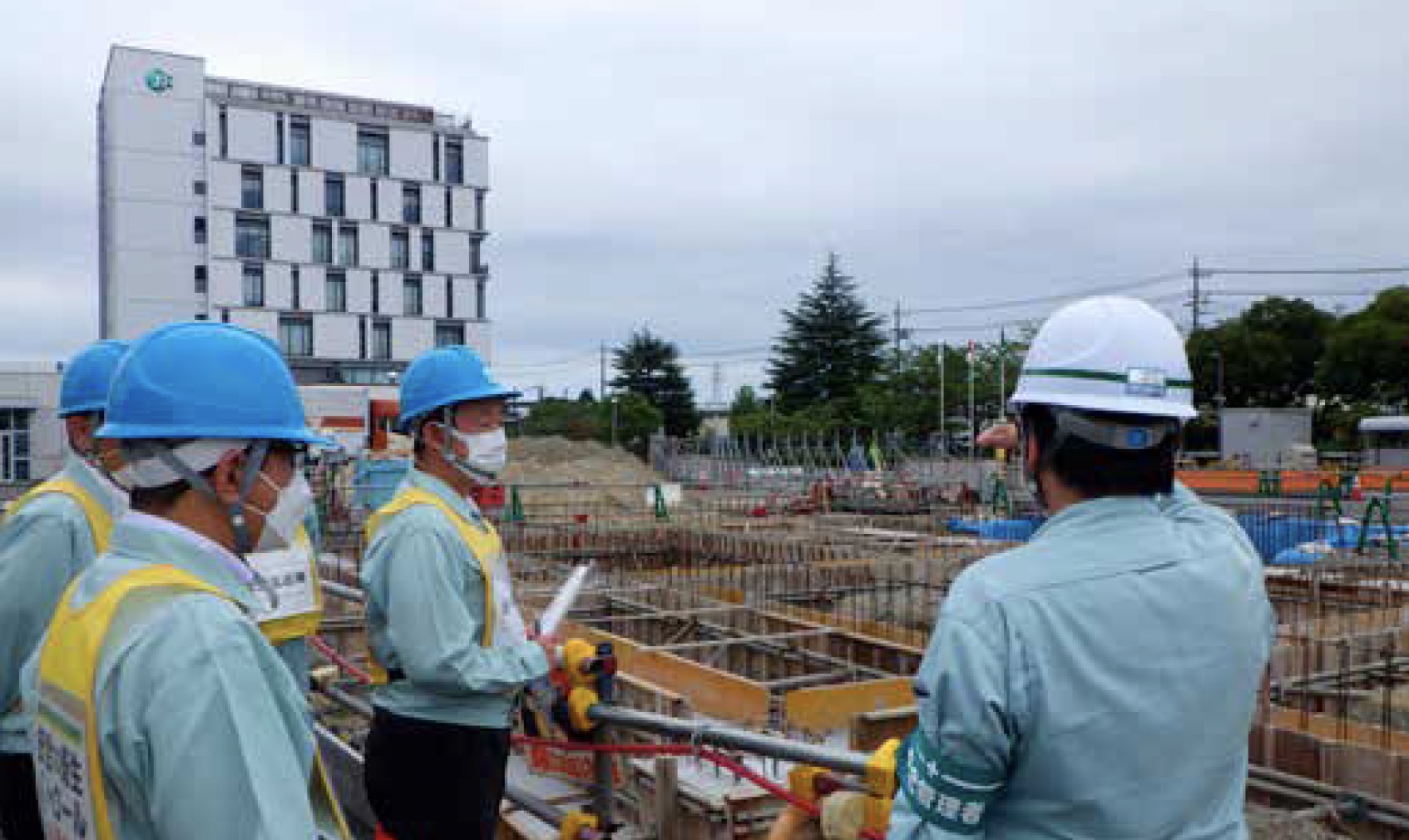
An environmental & safety audit at Isohara Works
The Group has set a Green Purchasing Policy, aimed at reducing environmental and other social impacts when procuring materials and equipment. Based on this policy, we have drawn up Green Purchasing Guidelines setting out specific requirements for choosing suppliers. This Guideline contains “mandatory conditions (minimum requirements)” for mandatory compliance, and “preferred conditions (preferences)” that we ask our business partners to consider. These conditions are applied to all of our suppliers. Supplier compliance with these guidelines is checked in our CSR Procurement Questionnaire survey.